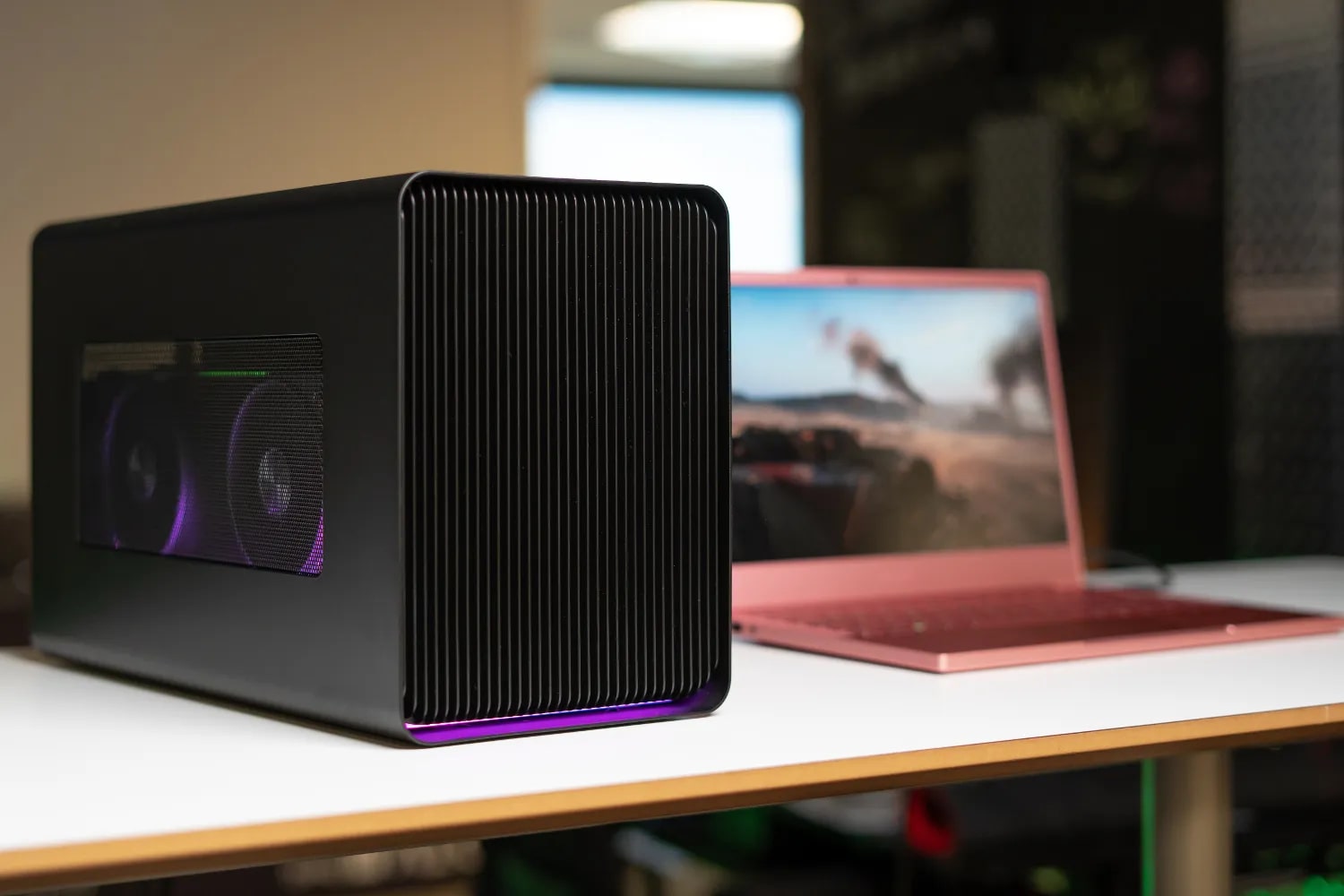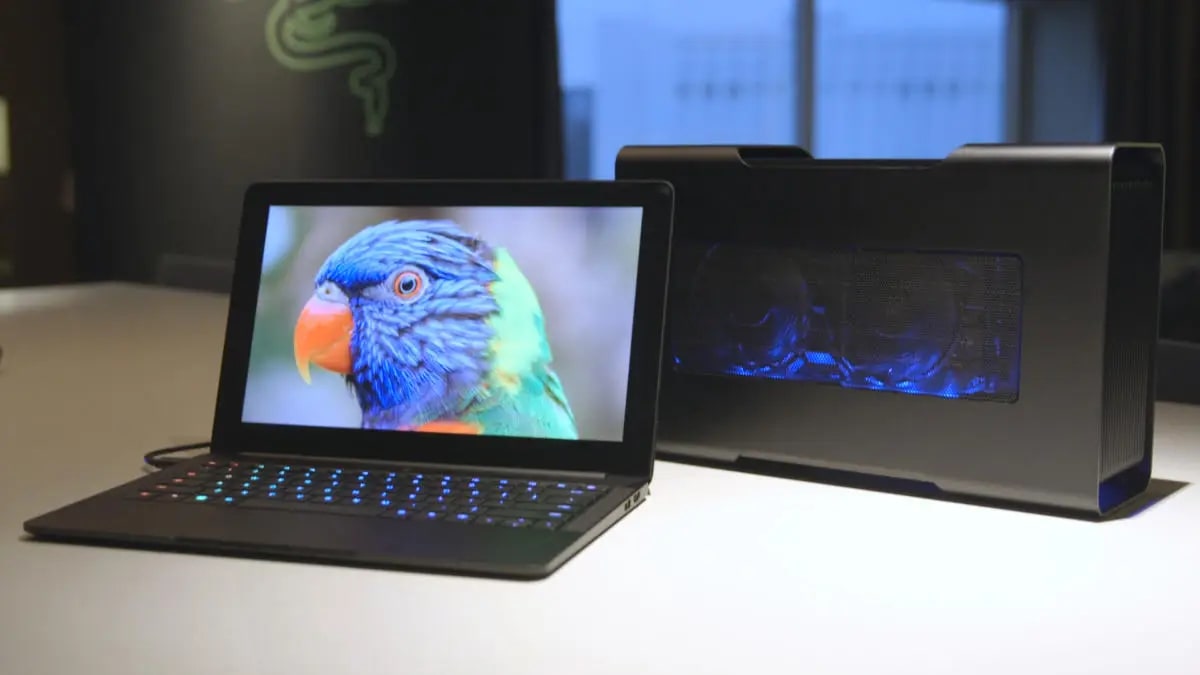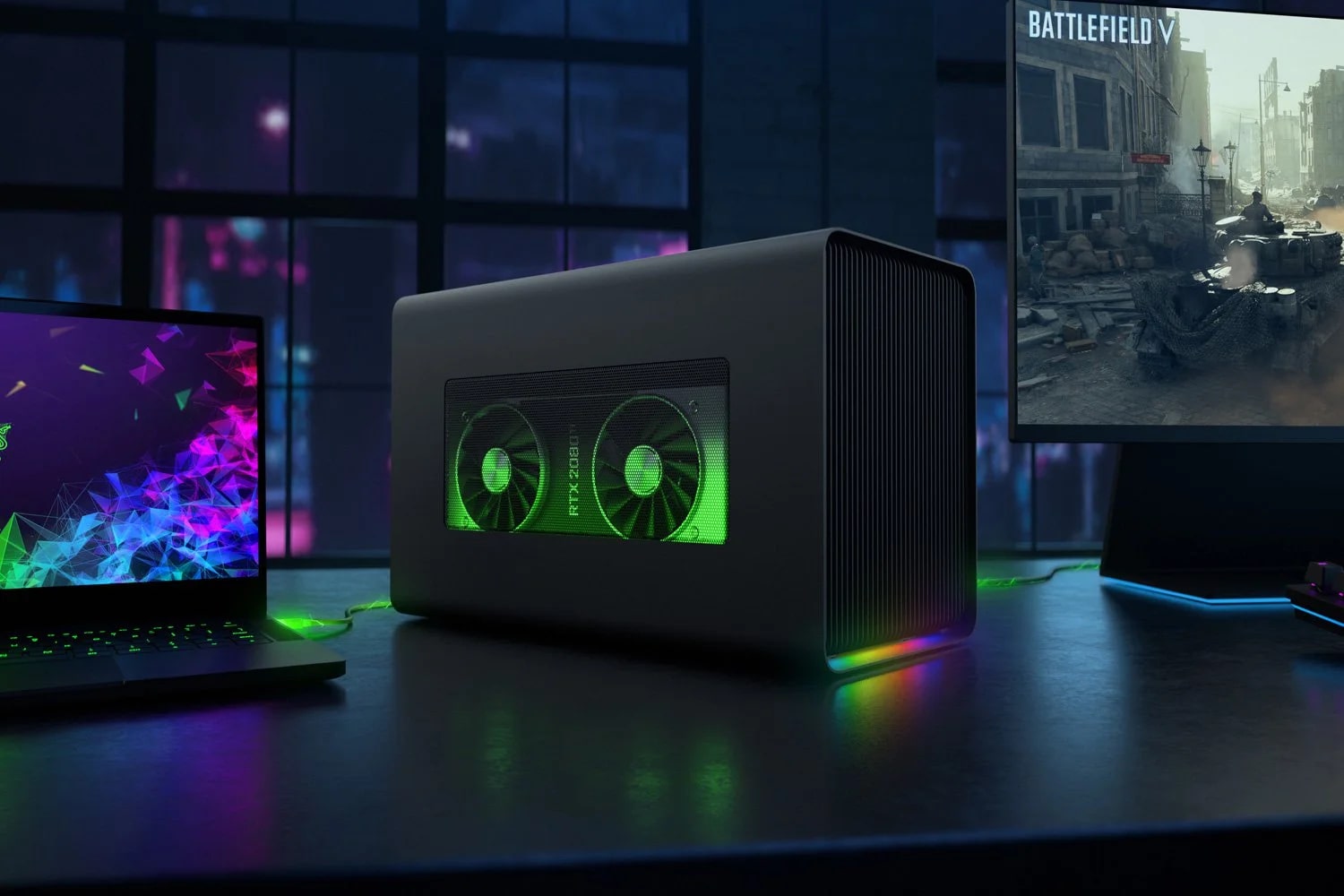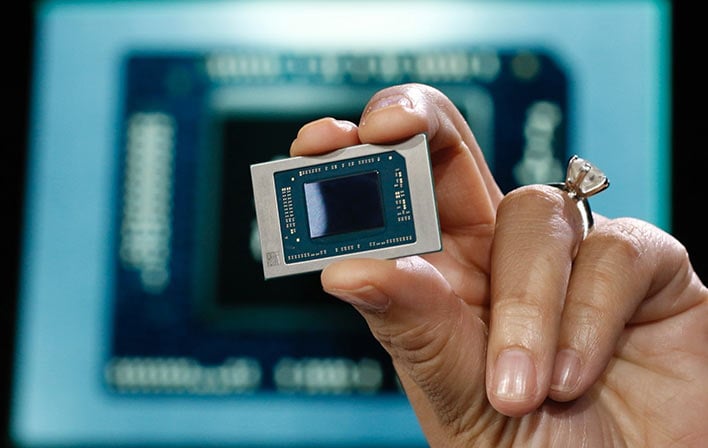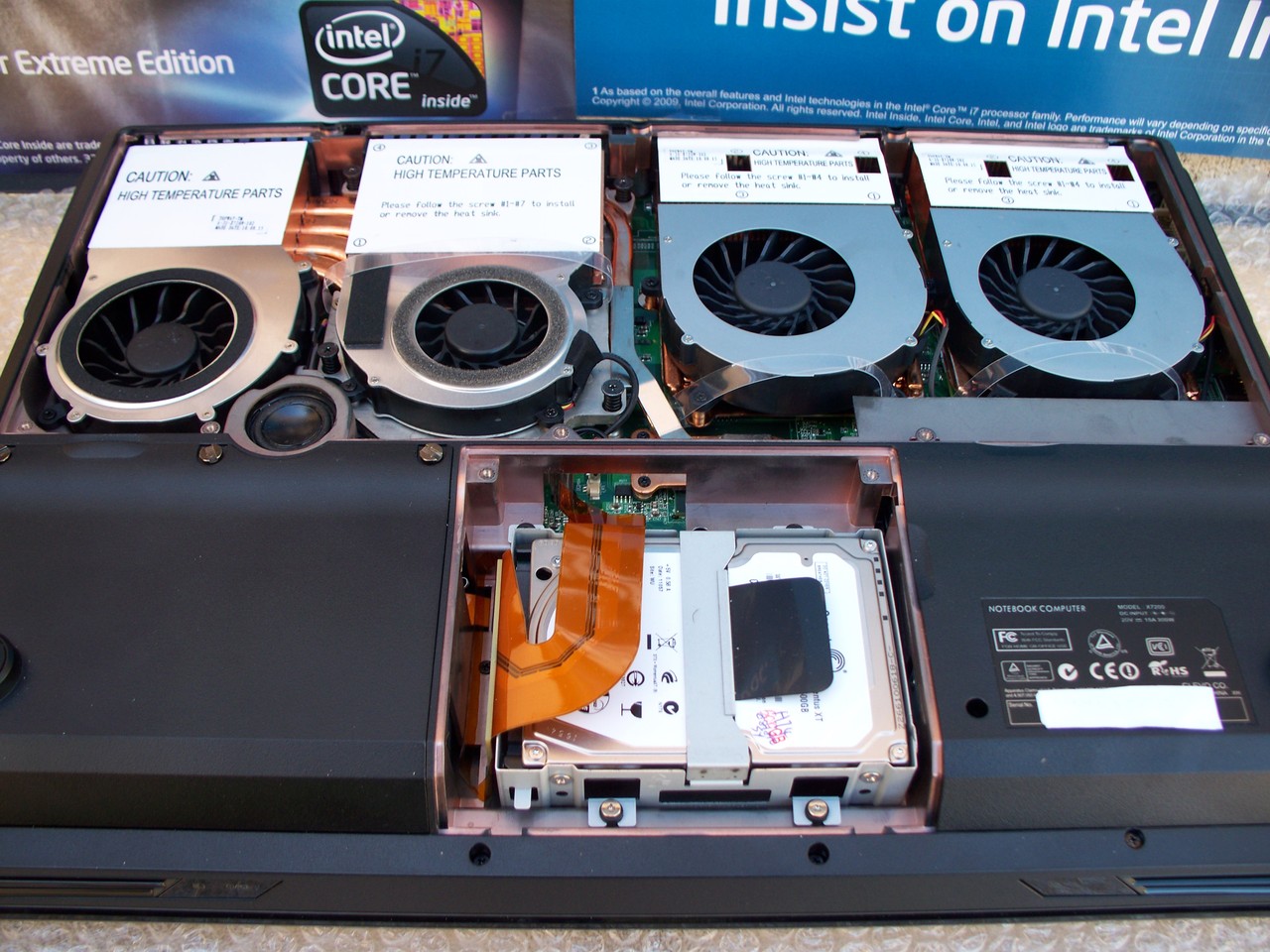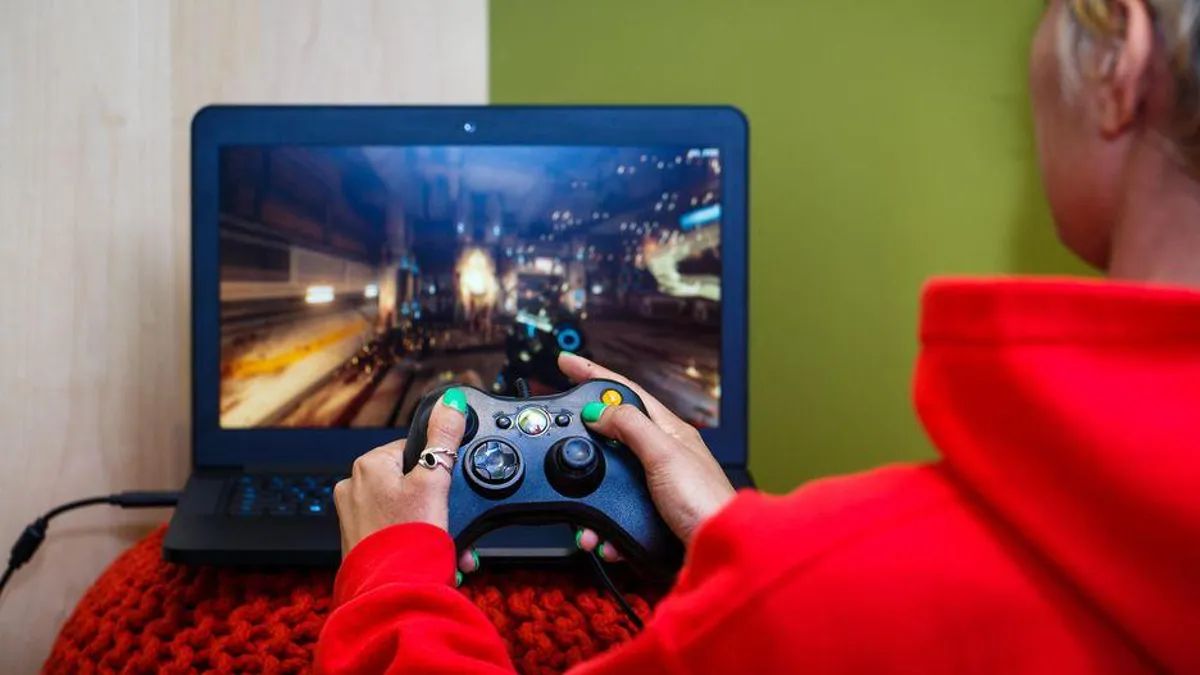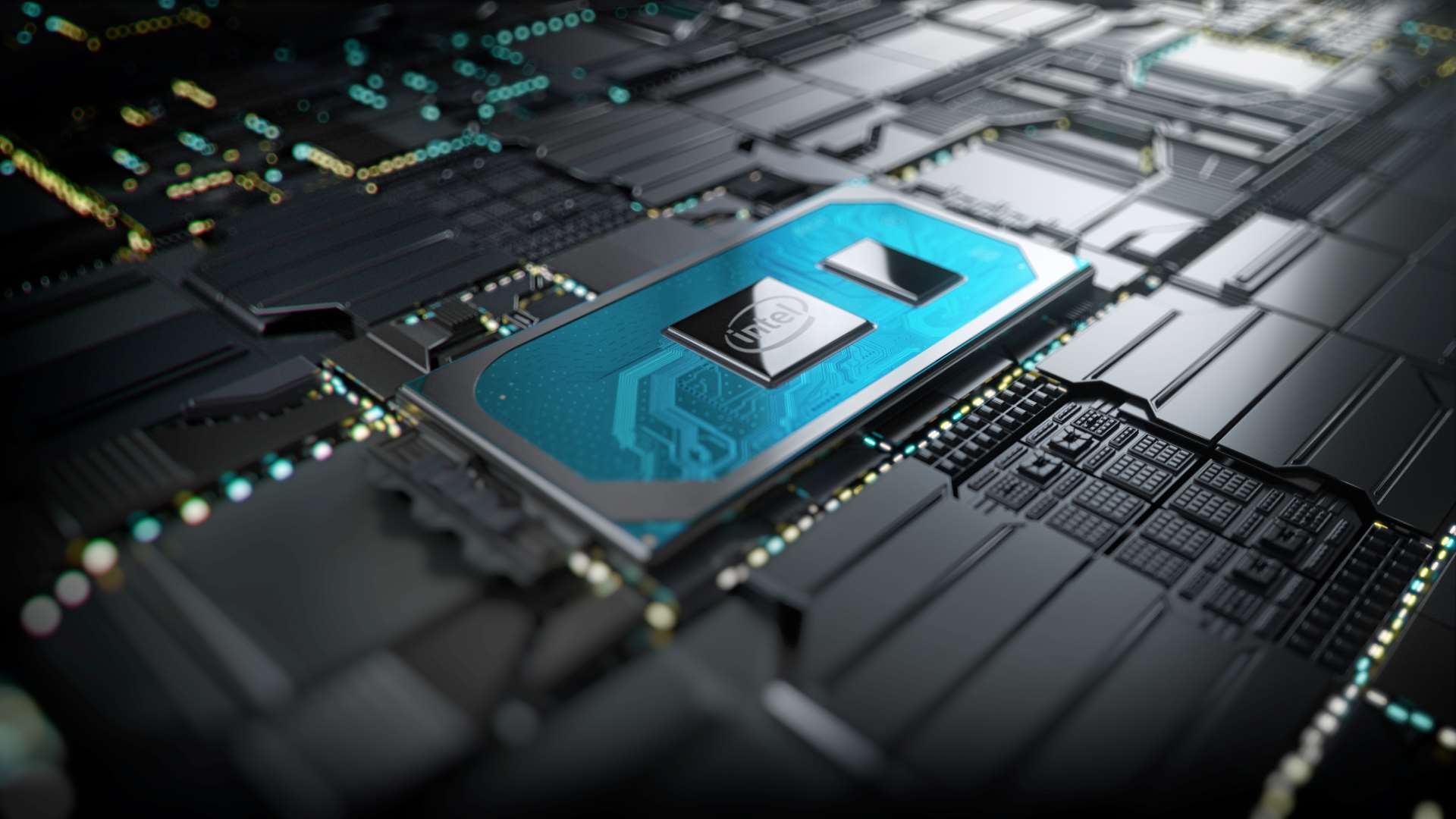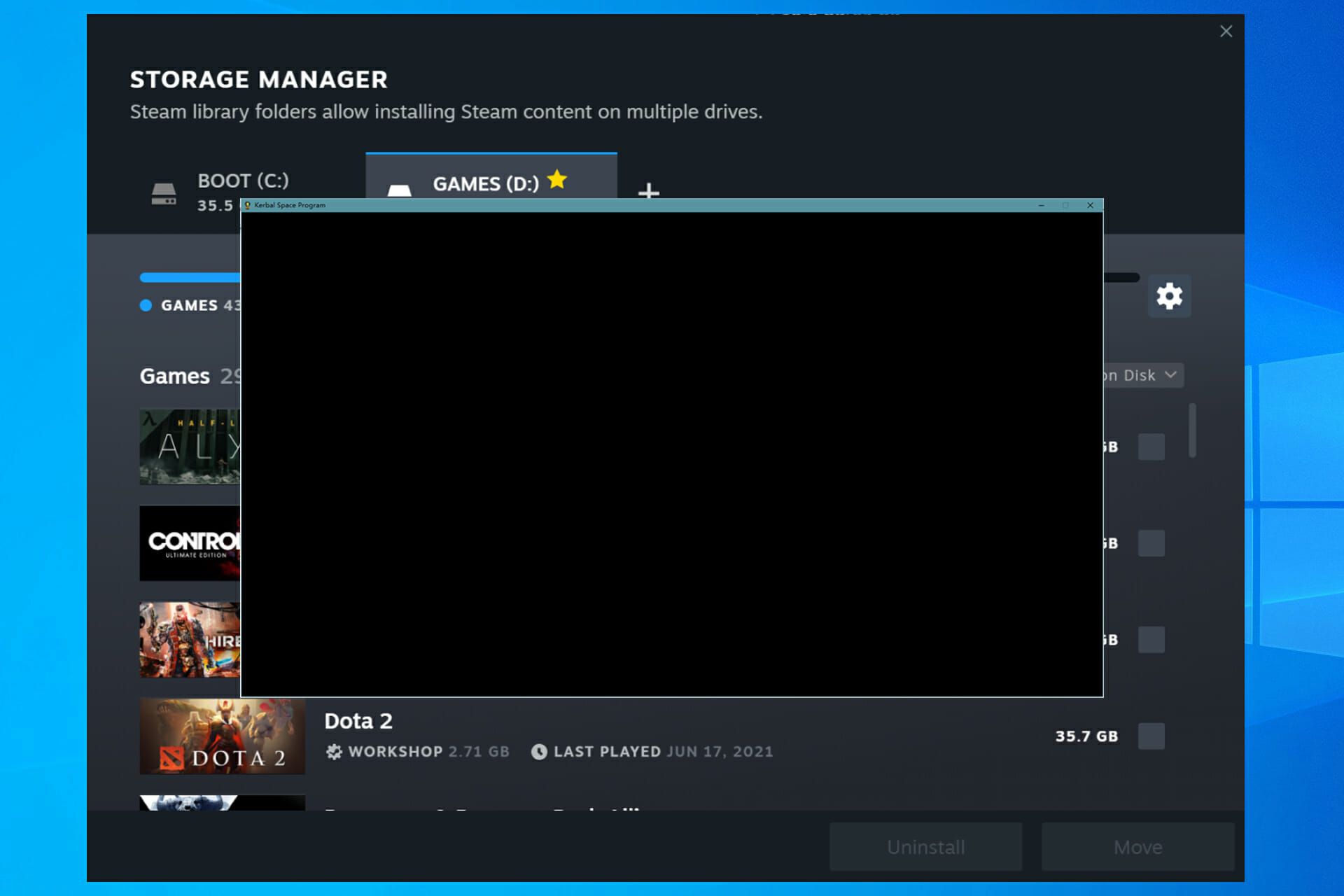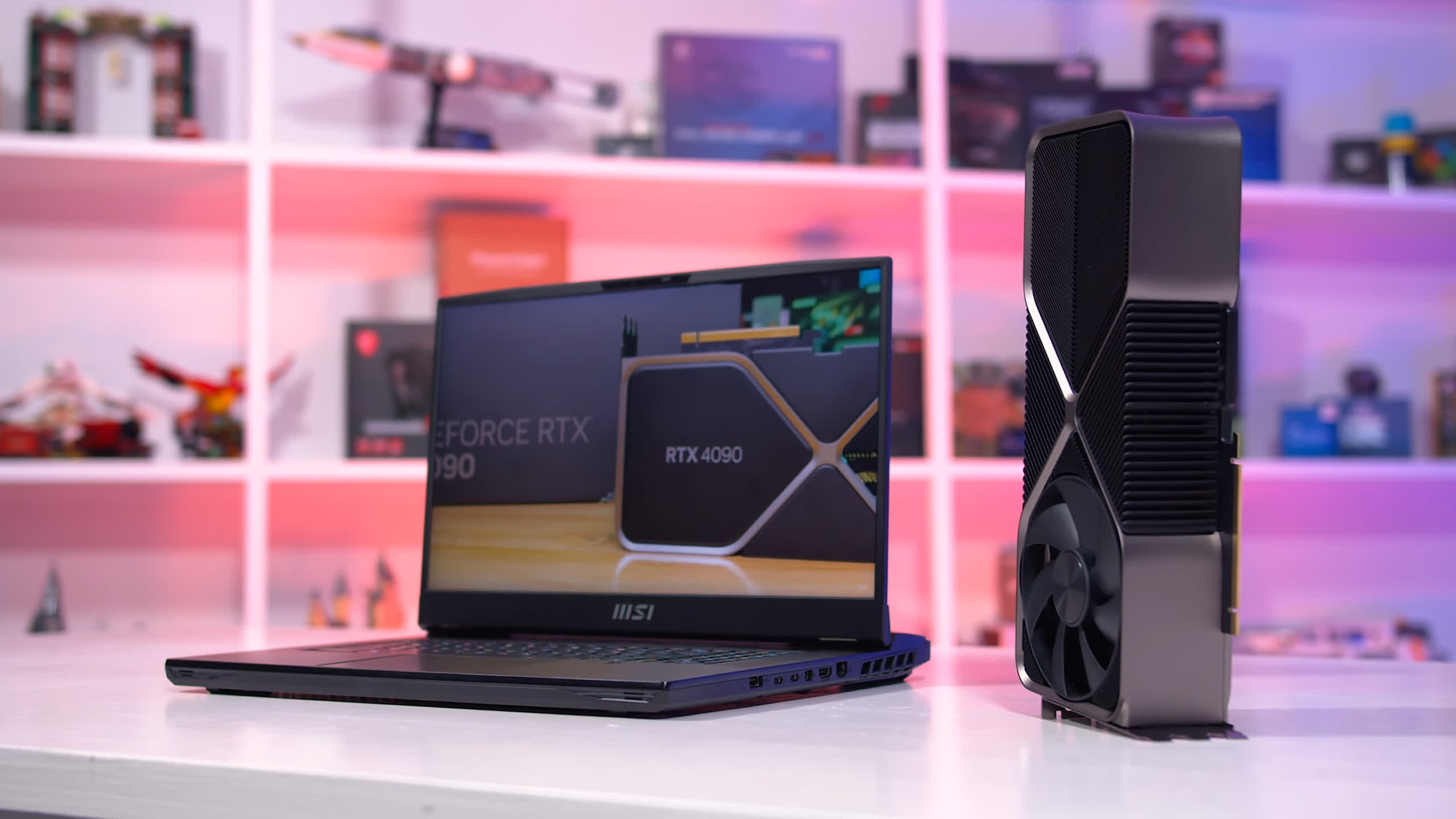Introduction
Welcome to the world of laptop graphics cards! In today’s digital age, a laptop is a crucial tool for a wide range of tasks, from work and studies to entertainment and gaming. While most laptops come equipped with integrated graphics cards, which are sufficient for everyday use, there may be times when you want to supercharge your laptop’s graphical capabilities. This is where using an external graphics card with your laptop comes into play.
In this article, we will explore the benefits of using a graphics card with your laptop, guide you through the process of checking compatibility, updating your graphics card driver, and connecting your graphics card to your laptop. We will also provide you with tips for configuring your laptop to utilize your graphics card and troubleshoot common issues that may arise.
Implementing a dedicated graphics card can significantly enhance the performance and capabilities of your laptop. If you are a gamer, a graphic designer, or someone who requires high-quality visuals for professional work, a graphics card can unlock a whole new level of visual fidelity and speed. Even for casual users, a graphics card can improve the overall user experience by reducing lag and loading times, allowing for smooth multitasking and faster rendering of graphics-heavy applications.
Before we dive into the technicalities, it is important to note that not all laptops are compatible with external graphics cards. The potential for utilizing a graphics card with a laptop largely depends on the laptop’s specifications, such as the availability of Thunderbolt or USB-C ports, the power capacity, and the BIOS compatibility.
In the next sections, we will guide you through the necessary steps to check compatibility, update drivers, connect your graphics card to your laptop, and optimize your laptop for graphics card usage. So, let’s get started!
Why You Might Want to Use a Graphics Card with Your Laptop
Integrated graphics cards, which are standard in most laptops, are designed to handle everyday tasks such as web browsing and document editing. However, when it comes to more demanding activities like gaming, video editing, 3D modeling, or running graphics-intensive software, integrated graphics cards can fall short in terms of performance and capabilities.
By using an external graphics card with your laptop, you can unlock a whole new level of power and potential. Here are some reasons why you might want to consider using a graphics card with your laptop:
- Enhanced Gaming Performance: If you’re a gamer, you know how important it is to have a high-performance graphics card. An external graphics card can boost your laptop’s gaming capabilities, allowing you to play the latest games at higher resolutions and frame rates. You’ll experience smoother gameplay, more realistic graphics, and faster load times.
- Improved Graphics-intensive Tasks: If you work with graphic design, video editing, 3D modeling, or any other graphics-intensive tasks, a dedicated graphics card can significantly improve your productivity. It offers faster rendering times, smoother editing, and the ability to handle complex visual effects with ease.
- Multiple Display Support: Most integrated graphics cards support only one or two displays. With an external graphics card, you can connect multiple monitors to your laptop, allowing for a more immersive and efficient workflow. This is particularly beneficial for professionals who require large workspaces or for gamers who want to experience a multi-monitor setup.
- Virtual Reality (VR) Compatibility: Virtual reality is gaining popularity, and many VR applications require a powerful graphics card for a smooth and immersive experience. By using an external graphics card, you can ensure that your laptop meets the performance requirements for running VR applications without any lag or stutter.
- Future-proofing Your Laptop: Over time, as software and applications become more demanding, your integrated graphics card may struggle to keep up. Investing in an external graphics card can future-proof your laptop, allowing it to handle upcoming technologies and software updates without the need for a complete system upgrade.
Using a graphics card with your laptop can significantly expand its capabilities and provide a performance boost for various activities. Whether you’re a gamer, a creative professional, or a power user, an external graphics card opens up possibilities for better visuals, smoother gameplay, and improved productivity.
Now that you understand why using a graphics card with your laptop can be beneficial, let’s move on to the next section, where we will guide you through the process of checking compatibility to ensure that your laptop is capable of utilizing an external graphics card.
Checking Compatibility
Before you proceed with using a graphics card with your laptop, it is essential to check the compatibility between your laptop and the external graphics card you plan to use. Here are the key factors to consider:
- Physical compatibility: The first aspect to check is whether your laptop has the necessary hardware ports to connect an external graphics card. The most common ports used for this purpose are Thunderbolt and USB-C. Make sure your laptop has one of these ports or an appropriate adapter to connect the graphics card.
- Power supply: External graphics cards require a significant amount of power to operate efficiently. Check your laptop’s power capacity and ensure that it can supply enough power to the graphics card. You may need to consider an external power supply or a compatible docking station to meet the power requirements.
- BIOS compatibility: Some laptop manufacturers lock down their BIOS settings to prevent the use of external graphics cards. Check if your laptop’s BIOS allows for the use of external GPUs. You may need to update your BIOS firmware to enable this feature.
- Operating system compatibility: Ensure that your laptop’s operating system is compatible with the external graphics card you plan to use. Most modern graphics cards support Windows and macOS, but it’s always a good idea to check the manufacturer’s specifications to avoid any compatibility issues.
To gather accurate information about your laptop’s compatibility, you can refer to the manufacturer’s website or user manual. Additionally, online forums and communities dedicated to laptop graphics card usage can provide valuable insights and recommendations based on specific laptop models.
Checking compatibility is crucial to ensure a seamless integration between your laptop and the external graphics card. By taking the time to verify these compatibility factors, you can avoid potential complications and make a more informed decision about whether using a graphics card with your laptop is feasible.
Once you have confirmed the compatibility, the next step is to update your graphics card driver, which we will discuss in the following section.
Updating Your Graphics Card Driver
Updating your graphics card driver is essential to ensure optimal performance and compatibility with your laptop. Here’s a step-by-step guide on how to update your graphics card driver:
- Identify your graphics card model: Start by identifying the model of your graphics card. You can find this information in the device manager on Windows or the About This Mac section on macOS. Note down the model and make of your graphics card.
- Visit the manufacturer’s website: Go to the official website of your graphics card manufacturer, such as NVIDIA or AMD. Navigate to the support or downloads section of the website.
- Locate the latest driver: Look for the latest driver for your specific graphics card model and download it. Make sure to choose the driver that is compatible with your operating system.
- Install the driver: Once the driver is downloaded, run the installer and follow the on-screen instructions to install the updated driver. It is recommended to close any running applications before proceeding with the installation.
- Restart your laptop: After the driver installation is complete, restart your laptop to apply the changes and ensure that the updated driver is properly functioning.
Updating your graphics card driver ensures that your laptop can take full advantage of the features and performance enhancements provided by the external graphics card. It also helps to resolve any compatibility issues that may arise during usage.
Remember to periodically check for driver updates and install them as they become available. Graphics card manufacturers regularly release new drivers to fix bugs, improve performance, and add support for new technologies.
Now that you have updated your graphics card driver, it’s time to move on to the next section, where we will guide you through the process of connecting your graphics card to your laptop.
Connecting Your Graphics Card to Your Laptop
Now that you have confirmed compatibility and updated your graphics card driver, it’s time to connect your graphics card to your laptop. Follow these steps to ensure a successful connection:
- Prepare your laptop: Shut down your laptop and unplug it from the power source. This will prevent any potential electrical or static damage during the connection process.
- Locate the graphics card port: Depending on your laptop model, the graphics card port may be located on the side, back, or bottom of your laptop. It is typically a Thunderbolt or USB-C port.
- Connect the graphics card enclosure: If you are using an external graphics card enclosure, connect the appropriate cable (usually Thunderbolt or USB-C) from the enclosure to your laptop’s graphics card port. Ensure a secure connection.
- Power on the graphics card: If your graphics card requires external power, connect the power adapter to the graphics card enclosure or docking station. Plug the power adapter into a power outlet and power on the graphics card.
- Wait for recognition: Once you have connected the graphics card and powered it on, wait for your laptop to detect the graphics card. It may take a few moments for the system to recognize the new hardware.
- Install any additional software: Depending on your graphics card and operating system, you may need to install additional software or drivers to fully utilize the capabilities of the graphics card. Follow the manufacturer’s instructions to install any required software.
Once the connection is established and the graphics card is recognized by your laptop, you can start taking advantage of the enhanced graphical capabilities. Remember to adjust your display settings and verify that your laptop is utilizing the external graphics card for the desired applications.
It’s important to note that some laptops may require a BIOS update or specific settings adjustment to enable the use of an external graphics card. Consult your laptop’s manufacturer documentation or support resources for guidance on any necessary configurations.
Now that you have successfully connected your graphics card to your laptop, let’s move on to the next section, where we will guide you through the process of configuring your laptop for graphics card usage.
Configuring Your Laptop for Graphics Card Use
After successfully connecting your graphics card to your laptop, it’s time to configure your laptop to utilize the external graphics card for optimal performance. Follow these steps to ensure that your laptop is properly configured:
- Access graphics card settings: Depending on your graphics card manufacturer, you may have a dedicated software or control panel to adjust the settings. Locate and open the graphics card control panel on your laptop.
- Set the default graphics card: In the control panel, navigate to the settings or preferences section and select the external graphics card as the default graphics device. This ensures that your laptop utilizes the graphics card’s power and capabilities for all applications and games.
- Adjust power settings: Graphics cards consume a significant amount of power. To maximize performance, access the power settings in the control panel and set the power profile to high performance or a similar option. This ensures that the graphics card operates at its full potential.
- Configure display settings: To take advantage of multiple monitors or a higher resolution, access the display settings in your laptop’s system preferences. Adjust the resolution, refresh rate, and monitor arrangement to meet your preferences.
- Optimize game settings: If you’re a gamer, many graphics card control panels have game optimization features. Explore these settings to optimize the graphics quality, frame rate, and other visual aspects specific to individual games.
- Update software and drivers: It’s essential to keep your graphics card software and drivers up to date. Check for updates regularly and install them to ensure you have access to the latest features, bug fixes, and performance improvements.
By properly configuring your laptop for graphics card use, you can unlock the full potential of your external graphics card and enjoy enhanced visuals, smoother gameplay, and improved performance in your applications and games.
Keep in mind that specific steps and options may vary depending on your graphics card and operating system. Refer to the manufacturer’s documentation or online resources for more detailed instructions specific to your setup.
Now that you have configured your laptop for graphics card usage, let’s move on to the next section, where we will address some common troubleshooting issues that you may encounter.
Troubleshooting Common Issues
While using a graphics card with your laptop can significantly enhance your visual experience, there may be times when you encounter certain issues or challenges. Here are some common problems and their potential solutions:
- Driver compatibility issues: If you experience graphical glitches, crashes, or compatibility errors, it may be due to outdated or incompatible graphics card drivers. Ensure that you have installed the latest drivers from the manufacturer’s website. If the issue persists, try rolling back to a previous driver version or reaching out to the manufacturer’s support for assistance.
- Power-related issues: If you constantly experience power-related problems, such as sudden shutdowns or lag, it may be due to insufficient power supply. Ensure that your laptop’s power supply can handle the requirements of the external graphics card. Consider using a compatible docking station or an external power supply to provide adequate power for optimal performance.
- Overheating: Graphics cards generate a significant amount of heat, and inadequate cooling can lead to overheating issues. Ensure that your laptop has proper ventilation and cooling mechanisms, such as additional fans or cooling pads. Regularly clean the cooling system to remove any accumulated dust or debris that could hinder proper airflow.
- BIOS and firmware updates: Some laptops may require BIOS or firmware updates to enable graphics card usage. Check for updates on the laptop manufacturer’s website and install them accordingly. Be cautious and follow the instructions provided by the manufacturer to avoid any potential issues during the update process.
- Compatibility issues with specific applications or games: Certain applications or games may not be fully optimized or compatible with external graphics cards. Check the application or game developer’s website or support forums for any known compatibility issues or recommended settings. Updating the application or game to the latest version often resolves many compatibility problems.
- Unstable performance: If you notice unstable or inconsistent performance with your graphics card, it may be due to background processes or conflicting software. Close unnecessary applications and disable any unnecessary background processes to ensure that your system resources are fully allocated to the graphics card.
If you encounter any other issues that are not mentioned above, it’s always a good idea to refer to the documentation provided by the graphics card manufacturer, check online forums, or seek assistance from the manufacturer’s support team for further troubleshooting steps.
By addressing these common issues and seeking appropriate solutions, you can ensure a smooth and optimal experience with your graphics card and laptop setup.
Now that we have explored troubleshooting common issues, let’s conclude this article by summarizing the key points we have discussed throughout the article.
Conclusion
Using a graphics card with your laptop can transform your computing experience, providing enhanced visuals, improved gaming performance, and increased productivity for graphics-intensive tasks. In this article, we covered the benefits of using a graphics card with your laptop, the importance of checking compatibility, the process of updating your graphics card driver, connecting your graphics card to your laptop, configuring your laptop for graphics card usage, and troubleshooting common issues.
We discussed how a graphics card can enhance gaming performance, improve graphics-intensive tasks, provide multiple display support, enable compatibility with virtual reality applications, and future-proof your laptop. We also emphasized the importance of checking hardware compatibility, power supply limitations, BIOS compatibility, and operating system compatibility before proceeding with using an external graphics card.
We provided a step-by-step guide for updating your graphics card driver and connecting your graphics card to your laptop. Additionally, we discussed the importance of configuring your laptop for graphics card usage, including setting the default graphics card, adjusting power settings, configuring display settings, optimizing game settings, and updating software and drivers.
Lastly, we addressed common issues that may arise when using a graphics card with your laptop, such as driver compatibility problems, power-related issues, overheating, BIOS and firmware updates, compatibility issues with specific applications or games, and unstable performance. We offered troubleshooting tips and recommended seeking assistance from the graphics card manufacturer’s support team when encountering complex issues.
By following the steps outlined in this article and addressing any potential challenges, you can unlock the full potential of your laptop by harnessing the power of an external graphics card. Whether you’re a gamer, a creative professional, or a power user, utilizing a graphics card with your laptop can significantly enhance your visual experience and productivity.
We hope this guide has provided you with valuable insights and instructions for making the most out of your laptop graphics card setup. Now, it’s time for you to dive in, unleash the power of your graphics card, and elevate your laptop experience to new heights.







